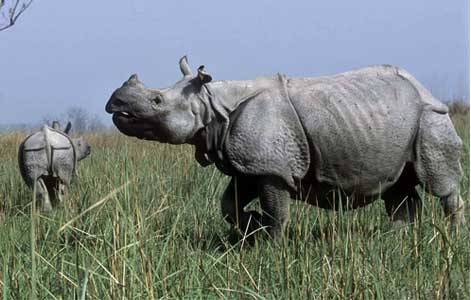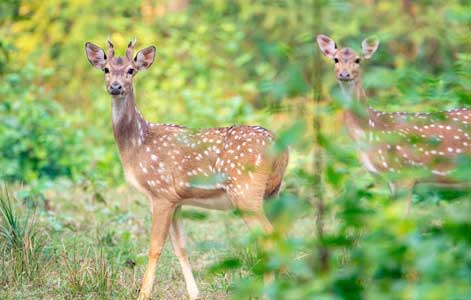About Kaziranga National Park
Kaziranga National Park is a renowned wildlife sanctuary located in the state of Assam, in northeastern India. It is one of the most significant protected areas in the country and was designated as a UNESCO World Heritage Site in 1985 for its unique and diverse biodiversity. Here are more detailed aspects of Kaziranga National Park:
Kaziranga National Park is situated in the Golaghat and Nagaon districts of Assam, covering an area of approximately 430 square kilometers (166 square miles). The park is positioned on the southern bank of the Brahmaputra River. The park is primarily characterized by its vast expanse of tall elephant grass, marshland, and tropical moist broadleaf forests. It is also dotted with numerous shallow water bodies, known as "Beels," that provide essential habitats for various wildlife species.


Kaziranga is famous for its rich and diverse wildlife population, including some of India's most iconic and endangered species. The park is home to the largest population of Indian one-horned rhinoceros in the world. Other notable animals found here include Indian elephants, Bengal tigers, Asiatic water buffaloes, swamp deer (also known as barasingha), and wild boars. Additionally, Kaziranga is a paradise for birdwatchers, with over 500 species of birds, including pelicans, storks, eagles, and various migratory species visiting the park during winter.
One-Horned Rhinoceros Conservation in Kaziranga National Park
Kaziranga's success story lies in its conservation efforts, particularly concerning the Indian one-horned rhinoceros. In the early 20th century, the population of these rhinos had dwindled to a mere handful. However, due to stringent protection measures and habitat management, the numbers have significantly rebounded, making Kaziranga a significant stronghold for these magnificent creatures.
Besides the flagship species like rhinos and elephants, Kaziranga is also home to a diverse array of flora and fauna. The park hosts various reptiles, including snakes and turtles, and a wide variety of insects and arachnids. Several fish species inhabit the park's water bodies, adding to its rich biodiversity. Despite its conservation success, Kaziranga National Park continues to face challenges, including poaching and habitat loss due to encroachment and human-wildlife conflict. The park authorities and various conservation organizations are actively involved in ongoing efforts to protect and sustain the park's delicate ecosystem.
Safaris and Tourism in Kaziranga National Park
Kaziranga offers visitors the opportunity to experience its unique wildlife through jeep safaris and elephant rides. The safaris are typically conducted in designated zones of the park, ensuring minimal disturbance to the animals and their habitats. The park is well-connected by road, rail, and air. The nearest town and railhead are Bokakhat and Furkating Junction, respectively. The closest airport is Jorhat Airport, approximately 97 kilometers (60 miles) away, while Guwahati Airport is about 217 kilometers (135 miles) away.
When visiting Kaziranga National Park, it's essential to adhere to park guidelines and responsible wildlife tourism practices to help preserve this invaluable natural treasure for generations to come.


